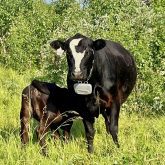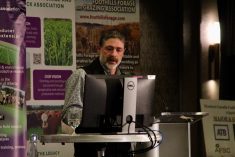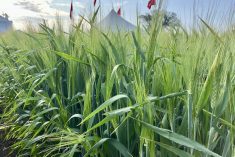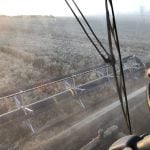In part 1 of this topic, we discussed how following the six principles of soil health can improve the four ecosystem functions or processes which will also improve your soil and its productivity.
Now let’s graze. There have been many names given to grazing methods. Some even argue about the use of names and if someone is doing it right. I applaud anyone’s attempt to do a better job, even when they make mistakes. We are all going to make mistakes in our grazing.
Many people look for a recipe to follow. They ask questions like: How many paddocks do we need? How long should the cattle stay in each paddock? What should the length of recovery be? How big should each paddock be? How much residual should we leave? Over time these questions will all need an answer but in your “context.” And, since your context will be ever-changing (perhaps slowly), the answers will also change. There is no recipe. Your practices need to fit your unique situation and obey or be compatible with the six principles of soil health.
Read Also

Canadian Beef Check-Off Agency reports on investments and activities
The check-off agency’s work behind the scenes is what ensures cattle check-off dollars are invested wisely, accounted for transparently and deliver measurable value back to producers and importers.
I, therefore, like the name adaptive multi-paddock, or AMP, grazing. Why? Because you won’t graze well without a fairly high number of paddocks per herd, and you must adapt to an ever-changing context. The size and even shape of paddocks most likely will change over time and maybe each time you graze an area. There are a few characteristics of “good” grazing. It always consists of short graze periods followed by much longer recovery periods. But, “short” and “long” differ depending on your context — climate, rainfall, resource objectives, season of year, etc. That’s one of the reasons it’s called adaptive.
For example, in northern Wyoming, I work with two very different grazing situations on the same ranch just across the fence from each other. One is sprinkler-irrigated pasture and the other is non-irrigated rangeland with about 14-17 inches of annual rainfall. On the irrigated pasture we can predict the next rainfall (a sprinkler pass), so it is easy to get full to nearly full recovery for three grazes per year (or perhaps two grazes plus one cutting of hay). On the non-irrigated land, we need at least a full year’s recovery; and we don’t want to graze at the same time as in the previous year. So, we will use a recovery time of at least 13 months (and probably more) from the time we left the paddock in the previous year until we go into it again this year.
With those recovery times, what is a short graze period? On the irrigated land we like to move every day or every two days. For some objectives, we might occasionally want to move several times in the same day to use the power of animal impact. On the non-irrigated rangeland, we are hoping to get the maximum graze period down to five days as a first step. In five days there will be little if any grazing of new regrowth.
The ranch is large and stock water is not well-distributed. So, the first task for us as new operators is to get dependable stock water within reasonable distance of every part of the ranch. Once that is done, we will try to build long and narrow paddocks with high-tensile electric fence.
We will shorten the graze periods on the best land first and move forward as budget and time allow. We know from past experience that long recovery times on every paddock will have a great positive effect. Some areas that have previously been terribly overgrazed almost every year will now have excellent opportunities for recovery and other areas that have hardly been used will now be used — some with graze periods longer than desired but followed by very adequate recovery periods.
On the good land that has reasonably easy terrain, we will sub-divide the long narrow paddocks with temporary electric fence. Long narrow paddocks make it much easier to subdivide paddocks with temporary fence made with poly wire and tread-in posts. The paddocks can be sized to fit the situation — herd size, season of the year, frequency of moves, etc. The temporary cross fences between two semi-permanent hot fences will be quick and easy to put in and keep hot. We may have to use other options to shorten graze periods in the rough country, but that will come later. In the meantime, the graze periods will be much shorter than what has been typical.
From this kind of work, I have seen carrying capacity double fairly quickly and then move toward tripling. I don’t think we know where it might top out, but we can greatly improve carrying capacity if we are good observers and continually do a better job. Don’t let the idea of electric fence scare you. It is much cheaper to install and maintain than typical barbed or net wire fences. It also holds livestock better once they are trained to the fence — which doesn’t take long.
The first improvement in stocking rate doesn’t come because you grow more feed. It comes as you begin to use more of the range because of more stock water sites and fencing to put animals in places where they seldom went.
Then, imagine if 15 inches of rain falls on your ranch and you lose half of that to runoff, erosion and evaporation. Think what the possibilities are when you start to capture half of what you have been losing and then even more over time.
Stocking rate is the biggest single driver of profitability. And, it can be dramatically increased without overgrazing by following the six principles of soil health to get the ecosystem to function better.
A friend in Montana doubled his stocking rate over a 10-year-plus period. When asked what he would do differently if he could do it over, he said that he would increase the pace of development of stock water and fence to improve the range faster. Why? Because he had spent about $50 per acre on the fence and water. Where in Montana do you buy a ranch for $50 per acre? He didn’t have to add any pickups, tractors, employees, horses or other overheads. How much economic power does a doubling of stocking rate have?
– Burke Teichert is a long-time manager of large ranches. He is also a consultant and speaker. Contact him at [email protected].
















